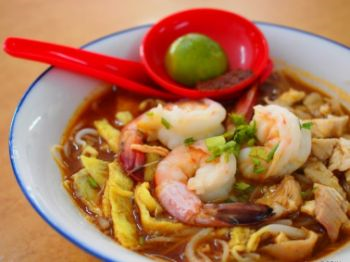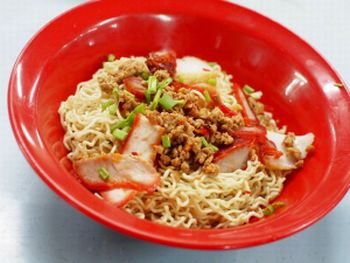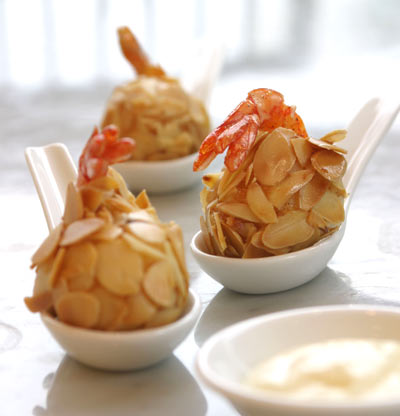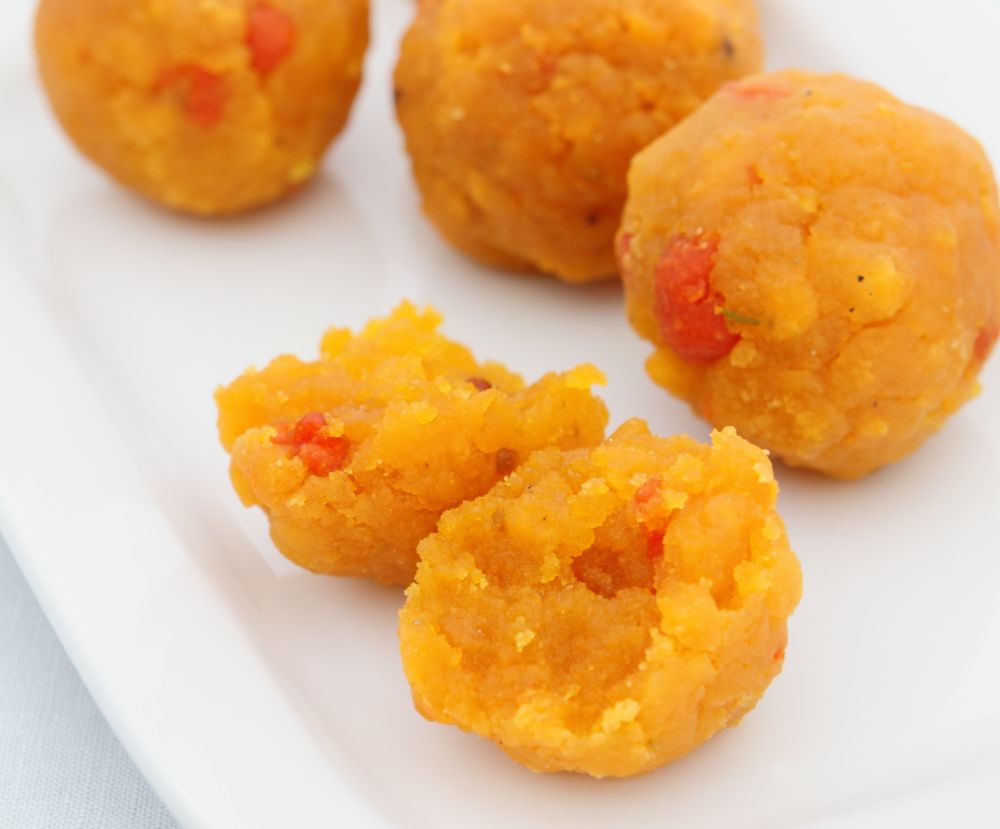Visitors cart home Sarawak’s famous salted fish, terubuk asin, by the boxes.
Kuching is one of my favourite cities, though I must confess, I have not ventured much further than the waterfront area.
It must be the cleanest city in Malaysia, and always seems calm and tranquil. Food-wise, it’s not the most exciting town, but then I am not so well acquainted with its offerings. Local palates veer towards the bland, or ours have been spoiled by too much seasoning and salt.
But there are two dishes I love in Kuching. It’s a little predictable, but I could eat Sarawak laksa and kolok mee at every meal, and that was how I found out they are mainly breakfast food, though some stalls stay open through lunchtime. I wish they were available everywhere for dinner too.
Sarawak laksa is quite different from its other counterparts. There is a delicate balance of the prawn stock’s sweetness and the spice mixture; one does not overwhelm the other and a few squirts of kalamansi juice somehow bring everything together. I have eaten Sarawak laksa in more than a few eateries in Kuching, and they are usually good. My friend, the photography blogger Robin Wong, says his favourite Sarawak laksa stalls are at Choon Hui Cafe near Grand Continental Hotel at Ban Hock Road, Choon Choon Cafe at Abell Road, Padungan and at Golden Arch Cafe at the 3rd mile.
I have only had the laksa at Choon Hui Cafe, and I think it’s delicious. A small bowl costs RM4 and a big bowl, RM5.
I also like the kolok mee at Choon Hui Cafe. Then again, I am partial towards kolok mee; it’s hard to go wrong with noodles drenched in lard and soy sauce. And only Sarawakians know how to get the sauce balance right. I know of colleagues from Kuching who pack kolok mee when they return to Kuala Lumpur because there is just no equivalent elsewhere.
 One of the places to enjoy a delicious bowl of Sarawak laksa (above) and kolok mee (below) in Kuching is Choon Hui Cafe. — Photos by Robin Wong
One of the places to enjoy a delicious bowl of Sarawak laksa (above) and kolok mee (below) in Kuching is Choon Hui Cafe. — Photos by Robin WongOn my most recent trip to Kuching, I finally made it to the weekend Satok market. It’s only open from Friday evenings to Sunday afternoons. The market is divided into different sections – wet market, dry market, a plants and pets section, a clothes and shoes section, etc. It’s not that big, so it’s easy enough to meander from lane to lane.
For locals, Satok market is where they come for ingredients from other parts of Sarawak. There are jungle produce like ferns, bamboo shoots, yam shoots, roselle, herbal roots and honey. There are also dried and preserved food like shrimp paste, cincaluk and smoked fish. Many stalls sell gula apong, the Sarawakian version of palm sugar.
The busiest section at Satok market is the fish section, and there is only one fish that everyone is interested in – terubuk. It’s known mostly for its bones – loads of fine, criss-crossing bones – but those in the know patiently pick through them because the reward is firm, tender, fatty and sweet flesh.
It’s also found in Peninsular Malaysia, but terubuk is synonymous with Sarawak. Visitors would usually order this fish at the seafood restaurants as it’s cheaper here. In Kuching, I have had it steamed and deep-fried.
But the most famous way of preparing terubuk in Sarawak is by salting it. At the Kuching airport, you’ll see many travellers carrying boxes with raffia handles, and chances are they are carrying the precious terubuk asin.
I heard of the salted terubuk from Satok but was never particularly interested in it because I assumed it was your typical salted fish until I visited Satok market and learnt the fish is salted differently.
The usual way of salting fish in West Malaysia is by salting the fish and then drying it under the sun for days. In Sarawak, they gut and clean the terubuk, then liberally rub it with fine salt.
The traders’ instructions are just to wash off the salt and freeze the fish if you are not cooking it within a week.
The salted terubuk tastes like salt-baked fish … not intensely salty like your typical salted fish, but a lot milder.
As the terubuk is so rich, the salt does not overwhelm its sweetness but complements it instead. The flesh remains moist and tender, with the salt lending depth of flavour to the fish. It is quite a treat! Now I understand why people buy the fish in bulk.
The salted terubuk comes in various sizes, so prices vary, but I discovered that Sunday prices at Satok market are steeper than weekday prices. The vendors here also sell terubuk roe and (frozen) unsalted terubuk with or without the roe. My colleague paid RM25 for an unsalted terubuk with roe, but when she sliced it open, found no roe.
Still, terubuk asin is on my shopping list, as are Sarawak laksa mix and kuih lapis (layered cake) …. and maybe a few packets of kolok mee too.
Hungry Caterpillar blogs at hungryc.com
Fried Terubuk Asin
(Serves 4)
- 2 medium-sized terubuk asin
- Oil for frying
- 2-3 shallots, thinly sliced
- 2-3 bird’s eye chillies, sliced
- Juice of 1 lime
Wash the fish to remove the salt, and pat dry. Heat the cooking oil and fry the fish until it’s golden brown.
Mix the sliced shallots, bird’s eye chilli and lime juice together. Spread the mixture over the fish.







